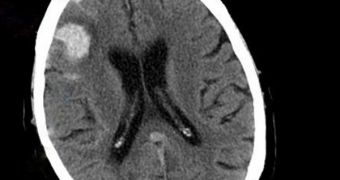Figuring out how much pressure develops in the skulls of people who've suffered traumas, tumors or concussions is very difficult today. Researchers in the United States have just developed an approach that should facilitate such measurements.
The only way experts can use to measure intracranial pressure today is to drill a hole in patients' heads, and look inside. This approach tells them about the severity of the swelling, and reveals whether or not the courses of treatment prescribed up to that point are working.
Due to the highly invasive nature of the surgery, doctors avoid looking inside people's heads as much as possible. They tend to apply this technique only for patients who are very badly injured.
Keeping the pressure inside the skull at normal levels is very important. If the brain swells, then important sections of brain tissue may get compressed and squashed. In some of the worst cases, experts observed that the supply of the blood to the brain was stopped.
Experts with the Research Laboratory of Electronics (RLE) at the Massachusetts Institute of Technology (MIT), in Cambridge, say that their new approach is a lot more effective, and less invasive.
The method is described in a paper published in the April 11 issue of the esteemed journal Science Translational Medicine. Its main advantage is that it would enable doctors to keep track of how their patients are faring after treatment starts.
According to the team behind the work, the technique relies on using a computer model of how blood flows through the human brain. By combining these data with arterial blood pressure and ultrasound readings, scientists can calculate the pressure the brain experiences at any given time.
“There’s a much larger patient population for whom physicians would like this measurement, but the invasiveness stops them from obtaining it,” investigator and study coauthor, George Verghese, explains.
He holds an appointment as the MIT Henry Ellis Warren Professor of Electrical Engineering. The expert says that NASA is especially interested in this technique, since it observed signs of elevated intracranial pressure in some of its astronauts, but could not measure it.
Non-invasive methods of surveying the health of astronauts would mean a lot for long-term space expeditions as well, such as those currently planned for Mars, by 2035.

 14 DAY TRIAL //
14 DAY TRIAL //